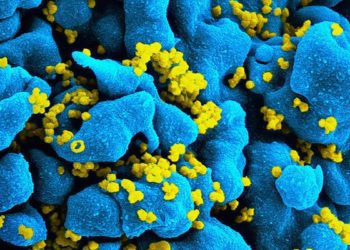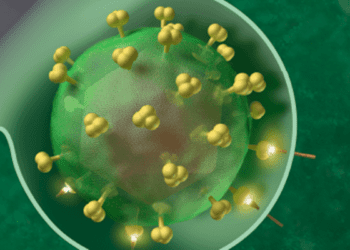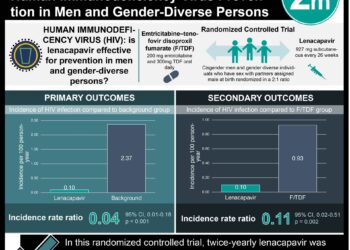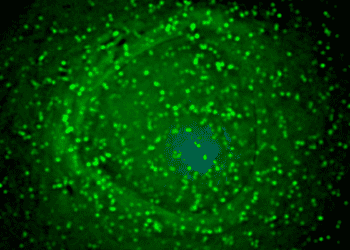2 Minute Medicine Rewind December 14, 2015
Mass Drug Administration for Scabies Control in a Population with Endemic Disease
Scabies is an underrecognized and common disease transmitted by direct contact and inoculation of surfaces and articles of clothing. Chronic scabies infection can lead to systemic illness and complications. In this study of three different island communities in Fiji, inhabitants received either standard care (treatment of individual and contacts with permethrin when scabies is diagnosed), mass administration of permethrin, and mass administration of ivermectin. Two thousand fifty-one participants across three communities were enrolled in the trial and the prevalence of scabies was evaluated after twelve months of each intervention. There was a decrease in prevalence in all three groups (36.6% to 18.8% in standard care treatment group, RR reduction 0.49, 95% CI 0.37 to 0.60; 41.7% to 15.8% in the mass permethrin treatment group, RR reduction 0.62, 95% CI 0.49 to 0.75, and 32.1% to 1.9% in the mass ivermectin treatment group, RR reduction 0.94, 95% CI 0.83 to 1.0). Complications of scabies such as the prevalence of impetigo also decreased. Each treatment therapy was effective in decreasing the prevalence of scabies, however mass administration of ivermectin was the most efficacious in reducing scabies and impetigo incidence.
The scope of practice of American family practice physicians have decreased over time as a result of insurance restrictions, generational changes, and provider preference. It is thought that the intended scope of practice of residents and actual scope of practice of family physicians can be discordant. In this study, 10,846 physicians and 3,038 residents taking the American Board of Family Medicine certification were asked to fill out a survey of intended or actual provision of specific clinical activities and assigned a score from 0-30 rating of clinical breadth. Intended clinical practice scope by residents were broader than actual clinical practice scope by practicing physicians (17.7 vs. 15.5, p < 0.001). In particular, there were significant differences in the expectation to provide obstetric care (23.7% intended vs. 7.7% actual, p < 0.001), inpatient care (54.9% vs. 33.5%, p < 0.001), and prenatal care (50.2% vs. 9.9%, p < 0.001). In this study, graduating family medicine residents expected to provide a greater scope of practice than actual reported scope of practice of current practitioners. These differences did not vary by provider age or years of practice, suggesting systemic issues might more greatly influence family medicine scope of practice.
Internal Medicine Resident Computer Usage: An Electronic Audit of an Inpatient Service
In American teaching hospitals, trainee resident physicians are an integral part of the medical team in performing procedures, writing notes, and coordinating care. As more care is being facilitated by electronic medical record (EMR) systems, there tension in the amount of time spent on direct patient care compared to time with patient data synthesis, documentation, and order entry on EMR systems. In this retrospective analysis of 87 internal medicine residents on an inpatient medicine service, the investigators identified the chronicity, frequency, and amount of electronic actions to evaluate time in front of the computer and total time in the hospital. The study included 4,327,708 between June 2013 and June 2014 and found residents worked a median of 69.2 hours per week (interquartile range 56.9 to 79.3 hours). There were temporal variation corresponding to early morning electronic ‘pre-rounding’ and gaps in computer usage corresponding to teaching conferences and noon conference. Each day, residents spent 4.2 hours (IQR 2.9 to 5.5 hours) in front of computer – corresponding to 36% of total working time each day. This study retrospectively evaluated resident activity by analyzing EMR actions and found residents perform many simultaneous actions across many patients and use the computer for a significant proportion of their workday.
Germline Mutations in Predisposition Genes in Pediatric Cancer
The frequency of predisposing somatic and germline mutations in pediatric cancers is unknown. Much oncology research hopes to identify mutations to help tailor therapy, prognosticate care, and identify novel treatments. In this study of 1120 patients with pediatric cancers, investigators used a combination of whole genome sequencing (664 patients) and whole exome sequencing (525 patients) to identify germline mutations in 565 genes and compared with healthy subjects in the 1000 Genomes Project. Pathogenic or likely pathogenic mutations were identified in 95 (8.5%) of patients compared to 11 (1.1%) patients in the 1000 Genomes Project. Commonly identified mutations include mutations in TP53, APC, BRCA2, NF1, PMS2, RB1, and RUNX1. Of 58 patients with known family history and pathogenic or likely pathogenic mutations, 23 (40%) had a family history of cancer. This study highlights the sensitivity of whole genome and exome sequencing to identify germline mutations in patients with pediatric cancer.
There are rare cases of durable HIV-1 remission after stopping highly active antiretroviral therapy (HAART) in adults who undergo primary infection, however this has not been seen in patients who were infected by HIV-1 by vertical transmission. In this case report, investigators describe the case of a 18 year old girl who was born to a woman with uncontrolled HIV viremia and maintained durable 12 year remission after stopping HAART. At birth, the patient was treated with zidovudine prophylaxis for 6 weeks, however HIV DNA and RNA was detected at 4 and 12 weeks of age. Patient was started on HAART at 12 weeks of age with virologic response. HIV RNA was undetectable from 16 weeks to 6.8 years of age. The family discontinued HAART therapy when the patient was 5 or 6 years old, however HIV RNA remained undetectable and HAART was not restarted. Over 12 years, her CD4 count remained stable with minimal HIV DNA 2.2 log10 copies per 10^6 PBMCs and minimal HIV RNA (<4 copies per mL). This study that, similar to a select population of adults, children with perinatal infection and early treatment would be HIV post-treatment controllers.
Image: PD
©2015 2 Minute Medicine, Inc. All rights reserved. No works may be reproduced without expressed written consent from 2 Minute Medicine, Inc. Inquire about licensing here. No article should be construed as medical advice and is not intended as such by the authors or by 2 Minute Medicine, Inc.







